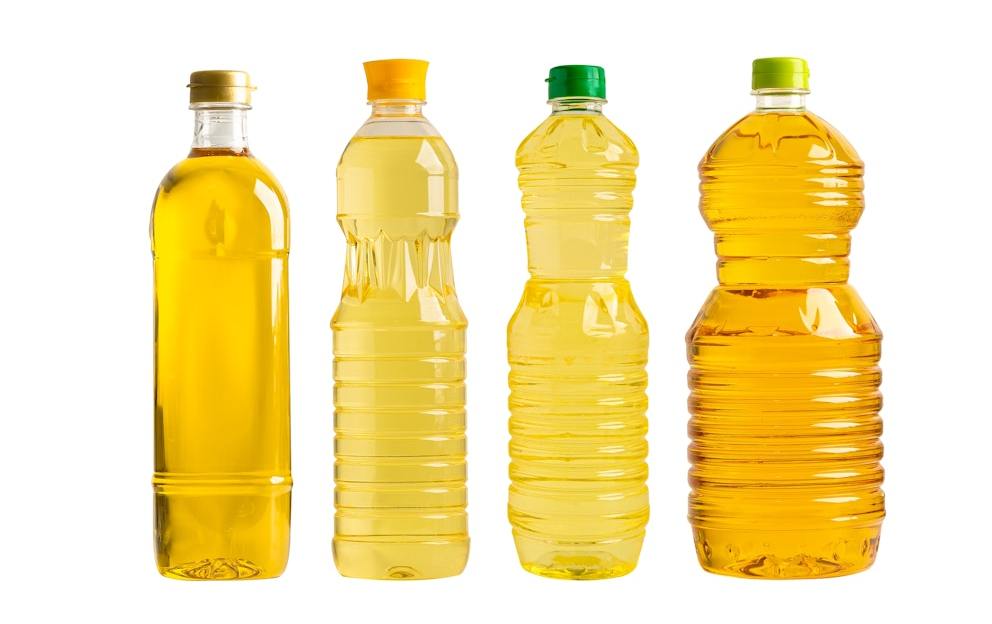At a glance
Seed oils, also known as vegetable oils, are extracted from plants such as soybeans, corn, and sunflowers, and are commonly found in many processed foods. However, their heavy refining process and high omega-6 fat content can promote inflammation and oxidative stress, which may harm cardiovascular health. Choosing unrefined, stable fats like olive oil, coconut oil, or butter supports better balance and overall wellness.
Cooking oils are one of the most common dietary sources of fat, widely used for sautéing, baking, frying, and preparing dressings.
But not all oils are created equal, as some cooking oils can trigger inflammation, disrupt metabolic balance, and contribute to weight gain.
Let’s compare the benefits and drawbacks of popular cooking oils and examine their impact on long-term health outcomes.
What are seed oils?
Seed oils, also called vegetable oils, are extracted from the seeds of plants such as soybean, corn, sunflower, safflower, canola, and cottonseed.
Although they contain monounsaturated and polyunsaturated fats (PUFAs), which are generally considered heart-healthy, seed oils are highly refined.
This means they’re extracted with heat, high pressure, and petroleum-based solvents, such as hexane, a process that destroys beneficial compounds and can generate toxic byproducts.
To improve appearance and shelf life, seed oils are also bleached and deodorized before reaching consumers.
Before their ban in 2021, seed oils often contained partially hydrogenated vegetable oils (PHOs), a primary source of artificial trans fat. PHO intake has been linked to heart disease, heart attacks, and even premature death.
Although PHOs are now phased out, seed oils are still linked to serious health complications.
Their high omega-6 content promotes inflammation and increases oxidative stress, which contribute to arterial damage, plaque formation, and an increased risk of cardiovascular disease.
Watch the video below to learn more about why it’s crucial to avoid seed oils.
Cooking oils to avoid
Seed oils are popular and widely available and can be found in a variety of products, including baked goods, pre-packaged foods, frozen meals, fast food, salad dressings, and condiments.
Carefully checking labels can help you spot these six common cooking oils to avoid.
1. Canola oil
Canola oil, derived from the rapeseed plant, is a concentrated source of PUFAs, making it highly unstable when exposed to heat.
When used for frying or other high-temperature cooking methods, these fats can oxidize and form harmful compounds that can contribute to inflammation.
Additionally, canola oil is mostly genetically modified (GMO) and exposed to chemical herbicides, such as glyphosate, which is linked to cancer, reproductive harm, and liver and kidney damage.
2. Soybean oil
Soybean oil has been shown to increase oxidative stress, chronic inflammation, and low-density lipoprotein (LDL), also known as bad cholesterol.
Despite popular claims that replacing saturated fats with seed oils supports heart health, research indicates that soybean oil’s high omega-6 fat content may contribute to arterial plaque buildup associated with cardiovascular disease.
Evidence published in Open Heart concluded, “The omega-6 polyunsaturated fat linoleic acid…is likely a major dietary culprit for causing coronary heart disease, especially when consumed in the form of industrial seed oils commonly referred to as ‘vegetable oils’.”1
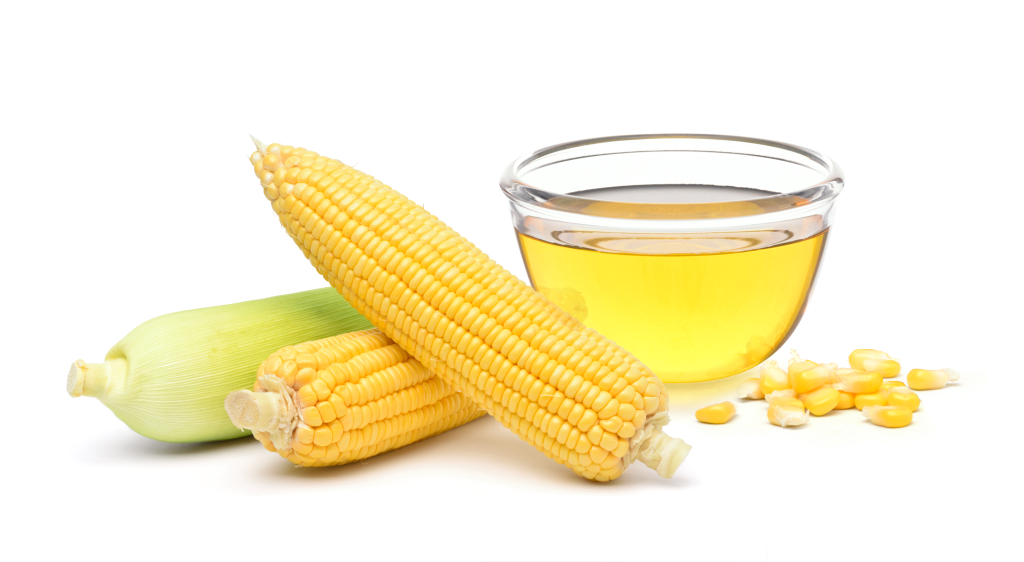
3. Corn oil
Corn oil contains significantly more omega-6 fatty acids than omega-3 fatty acids, making it a highly inflammatory seed oil.
In addition to residual chemicals, GMO commercial corn oil is also known to be at risk of being contaminated with heavy metals and mycotoxins, such as zearalenone.
A study published in Toxins found that zearalenone, an estrogen-like toxin found in corn oil, may disrupt the endocrine system and contribute to hormonal imbalances.2
4. Cottonseed oil
Cottonseed oil was first produced in the 20th century as a means to repurpose waste products from the farming industry.
Although it’s refined for cooking, unrefined cottonseed oil contains a toxic compound called gossypol, linked to infertility and liver damage.
A study published in The Scientific World Journal found that gossypol in cottonseed has a significant impact on sperm quality and egg production.3
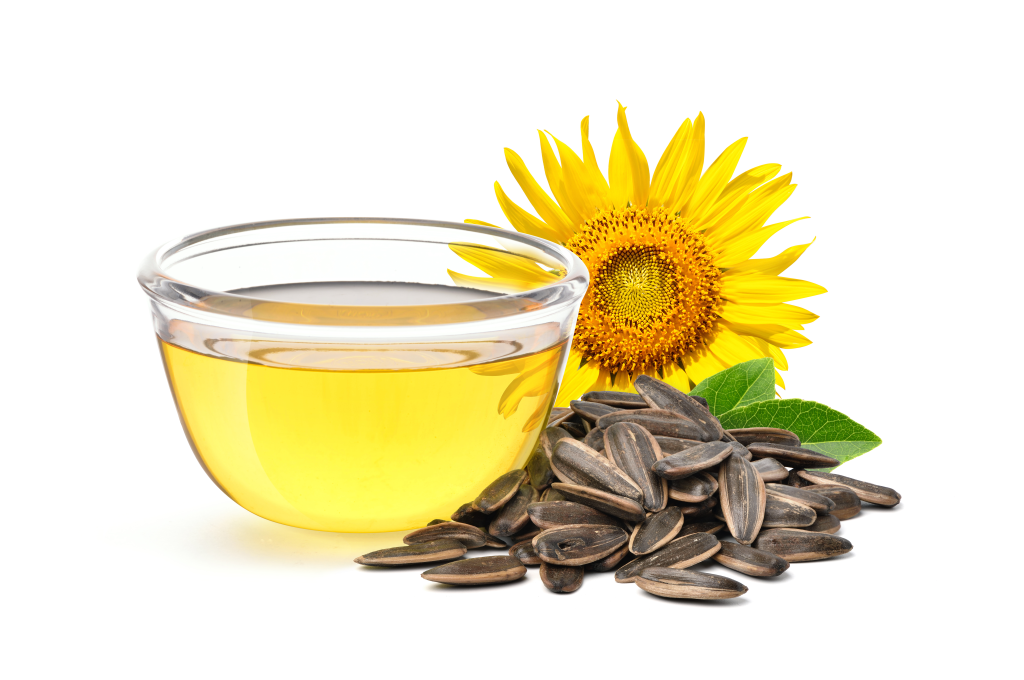
5. Sunflower and safflower oil
Sunflower and safflower oils are widely used in deep-fried fast foods, ultra-processed foods, and cooking sprays.
Safflower contains the highest percentage of inflammatory linoleic acid among all seed oils, followed by sunflower oil, which can increase the risk of obesity and cardiometabolic disease.
However, high-oleic sunflower oil contains a more favorable omega-6 to omega-3 fat ratio, making it safer to consume in small amounts as part of a healthy diet.
6. Peanut oil
Peanut oil is high in omega-6 fats and prone to oxidation when used for high-heat cooking, which can generate free radicals linked to cellular damage and inflammation.
It may also contain peanut proteins that can trigger allergic reactions in sensitive individuals, and may be a source of aflatoxins, a group of toxic molds commonly found in peanut products.
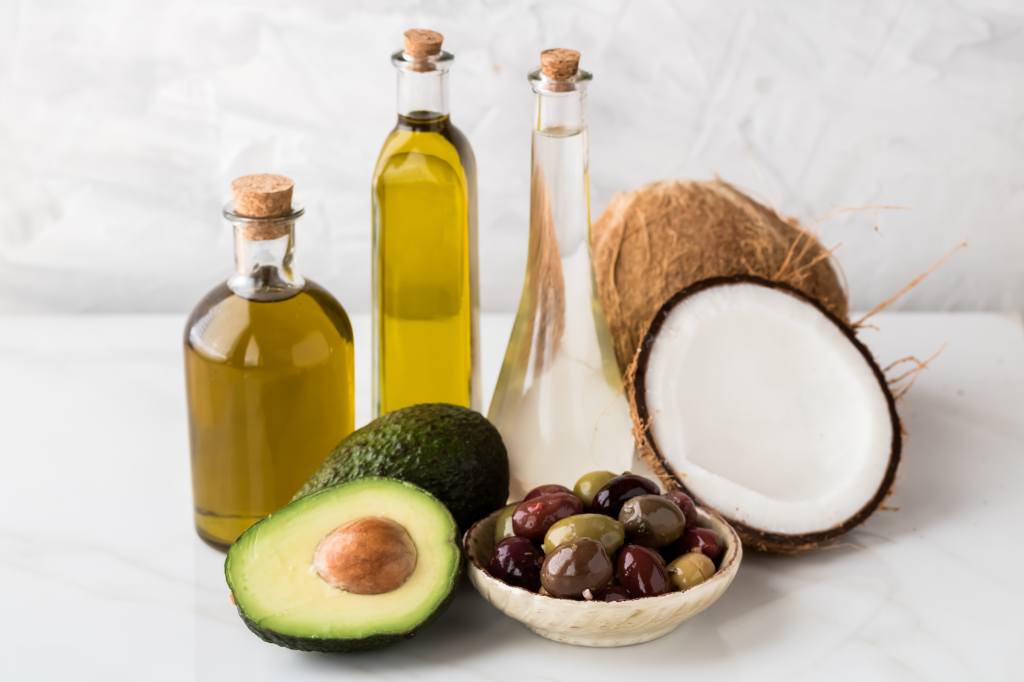
The 4 best oils for your health
Cooking oils are a central part of the modern diet, making it essential to choose an option that supports long-term health while boosting the flavor of your favorite dishes.
Here are four of the best cooking oils and how to use them for maximum health benefits.
1. Extra-virgin olive oil
Cold-pressed extra-virgin olive oil (EVOO) is a versatile oil suitable for low to medium-heat cooking, such as sautéing, baking, and dressing salads and vegetables.
EVOO is rich in antioxidants, including vitamin E, which helps protect cells and tissues from oxidative stress and damage caused by free radicals.
It’s also a good source of vitamin K and monounsaturated fats, which help maintain healthy cholesterol levels and reduce the risk of heart attacks and strokes.
A study published in Nutrients found that daily consumption of olive oil significantly reduced inflammatory markers associated with coronary artery disease (CAD) in those at risk for cardiovascular diseases.4
While refined olive oil can be suitable for high-heat cooking, it contains significantly fewer beneficial compounds due to the heat processing and chemical extraction involved.
2. Avocado oil
Avocado oil is extracted from the flesh of ripe avocados. With a high smoke point of 480 degrees F (250 degrees C), it’s an excellent choice for deep-frying, searing, and other high-heat cooking methods.
Avocado oil has a neutral flavor, making it suitable for a wide range of dishes, and is an abundant source of health-promoting phytonutrients, including tocopherols, polyphenols, and phytosterols.
These bioactive compounds act as antioxidants, helping protect against chronic inflammation, neurodegeneration, and cardiovascular disease.
Phytosterols have also been shown to support cholesterol balance, which may improve heart health by reducing the risk of arterial plaque development.
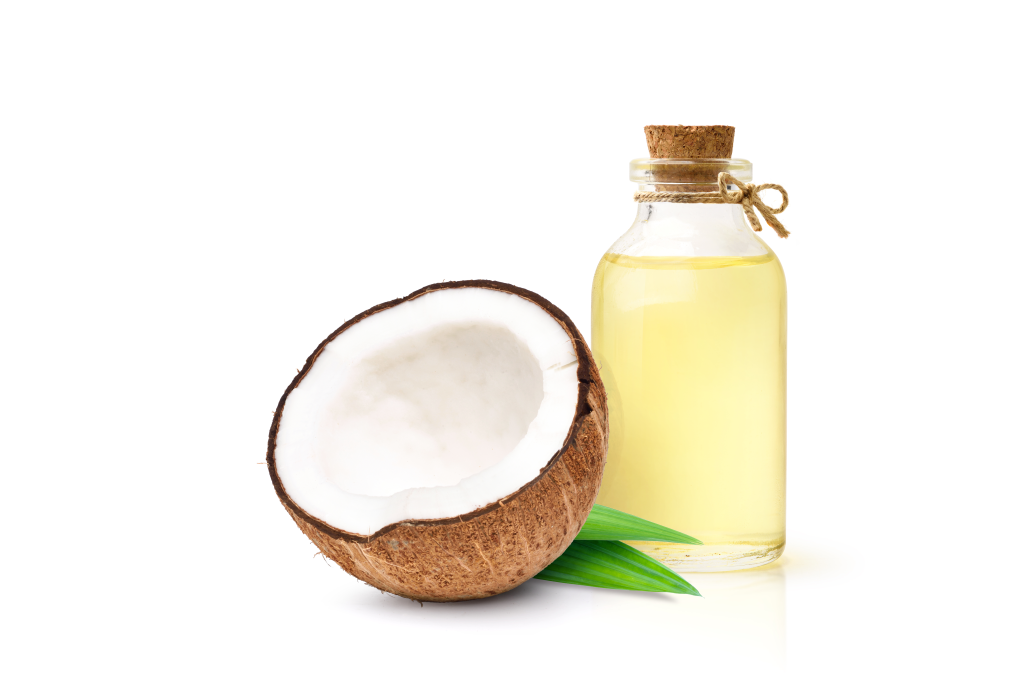
3. Coconut oil
Unrefined virgin coconut oil has a smoke point of 350 degrees F (177 degrees C), making it suitable for low to medium-heat baking and cooking.
Coconut oil is a good source of medium-chain triglycerides (MCTs), a type of saturated fat associated with improved cognitive and metabolic function, as well as potent antimicrobial and antifungal effects.
“Saturated fats are essential for endocrine and immune health,” explains Dr. Berg. “Without saturated fat, your body cannot properly synthesize hormones, metabolize calcium for strong bones, or effectively defend against infections and disease.”
4. Red palm oil
Red palm oil is extracted from the pulp of the oil palm fruit. It has a smoke point of around 350 degrees F, making it best suited for low to medium-heat cooking methods.
Palm oil is also an excellent source of dietary fat that can be added to soups, salad dressings, and basting sauces.
When unrefined, palm fruit oil has a red-orange hue due to the presence of natural plant pigments, called carotenoids, including beta-carotene and alpha-carotene. Carotenoids can be converted into vitamin A, supporting skin, eye, and immune health.
Additionally, red palm oil is composed of approximately 44 percent palmitic acid, the most common saturated fatty acid in the human body, which is essential for endocrine function, cellular structure, immunity, and nutrient absorption.
Choosing ethically-sourced, organic, and unrefined oils is recommended, as these have a lower environmental impact and retain their nutritional value.
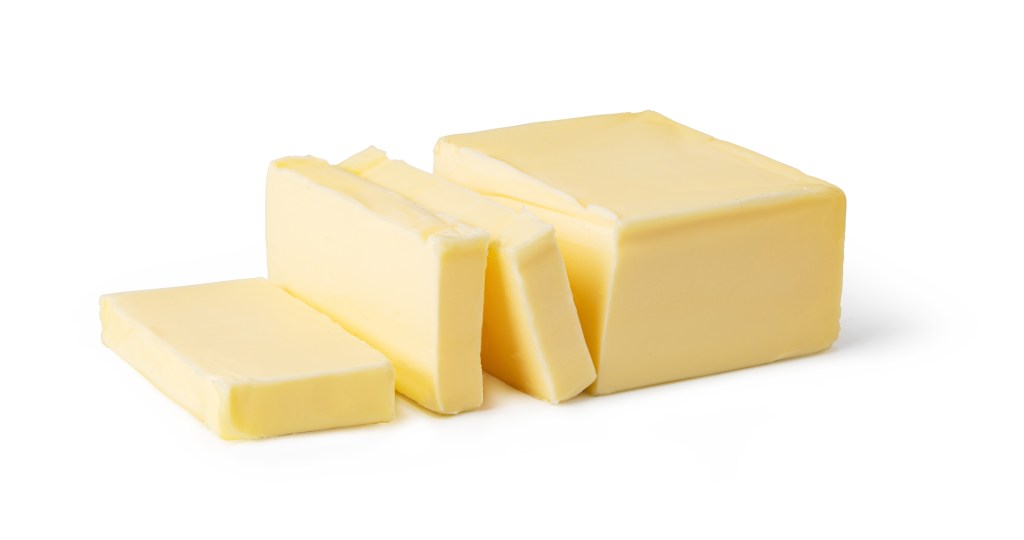
More healthy fats for cooking
Before largely being replaced by seed oils, animal fats served a variety of cooking purposes, including frying, baking, and everyday meal preparation.
Here are four nutrient-dense, animal-based fats that are excellent choices for cooking.
1. Grass-fed butter
Butter has a smoke point of around 350 degrees F, making it suitable for low-heat cooking, such as sautéing, caramelizing, or baking. It can also be used to prepare sauces, finish dishes, or as a spread.
Grass-fed butter is recommended, as it’s a rich source of fat-soluble vitamins A, E, D, and K2. These vitamins support cardiovascular health, strengthen the immune system, and maintain skin integrity.
Additionally, butter contains conjugated linoleic acid (CLA), which may reduce the risk of type 2 diabetes by supporting healthy blood sugar and insulin levels.
2. Ghee
Ghee is produced by slowly simmering butter to remove milk proteins, lactose, and water. It’s traditionally used in Indian and Middle Eastern cuisine and has a high smoke point of between 450 and 485 degrees F (230 to 250 degrees C).
Compared to regular butter, ghee is ideal for stir-frying, roasting, and other high-heat applications, retaining the same beneficial nutrients while excluding common dairy allergens.
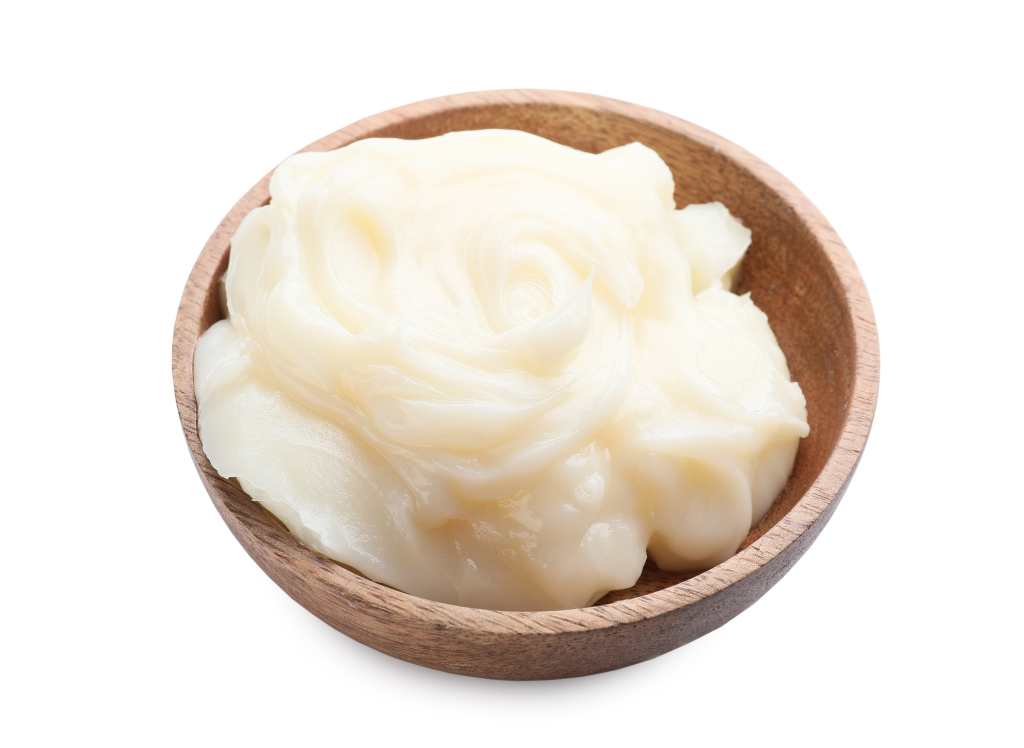
3. Tallow
Before the widespread use of seed oils, beef tallow was the most commonly used fat for deep frying, baking, and general cooking.
Tallow is naturally resistant to oxidation, making it more stable than vegetable oils when heated to temperatures of up to 420 degrees F (216 degrees C).
It also offers healthy saturated and monounsaturated fats, including CLA and palmitoleic acid, as well as fat-soluble vitamins that may help lower inflammation and support metabolic balance.
4. Lard
Lard is rendered pig fat. With a smoke point of 374 degrees F (190 degrees C), lard is a good choice for baking and most home cooking purposes.
Approximately half of the fat in lard is oleic acid, a healthy monounsaturated fat associated with balanced cholesterol levels and a reduced risk of cardiometabolic diseases.
Lard is also high in anti-inflammatory omega-3 fatty acids and vitamin D, which plays a vital role in various biological processes, including calcium metabolism, immune modulation, and cardiovascular health.
It’s recommended to choose pasture-raised pork lard, which offers the highest nutritive value.
Key takeaways
- Seed oils, or vegetable oils, are extracted from plants such as soybeans, corn, sunflower, safflower, canola, and cottonseed through high-heat and chemical processing.
- Despite being marketed as heart-healthy, seed oils have been linked to arterial damage and a higher risk of cardiovascular issues.
- Choosing unrefined, stable fats, such as olive oil, coconut oil, or butter, supports better health and reduces exposure to harmful compounds.
FAQ
1. What is the most unhealthy oil?
Seeds oils, such as soybean, corn, and cottonseed oil, are considered the most unhealthy cooking oils. Their high omega-6 fat content, tendency to oxidize during processing, and exposure to pesticides have been linked to chronic inflammation and an increased risk of health issues.
2. What cooking oil is healthiest?
Extra-virgin olive oil (EVOO) is a versatile cooking oil rich in essential nutrients and antioxidants, including vitamin E. EVOO is also a good source of vitamin K and monounsaturated fats, which support cardiovascular health and help reduce the risk of heart attacks and strokes.
3. Is canola oil a healthy oil?
No, canola oil isn’t considered a healthy choice as it’s an ultra-processed seed oil that becomes unstable when heated and contains high amounts of inflammatory omega-6 fatty acids.
4. What is the healthiest oil to use for frying food?
Avocado oil is one of the best plant-based oils to use for frying, with a smoke point of 520 degrees F (270 degrees C). The healthiest animal-based fats include ghee and beef tallow, which have smoke points of 485 and 420 degrees F (226 to 250 degrees C), respectively.
Sources
- https://pmc.ncbi.nlm.nih.gov/articles/PMC6196963/ ?
- https://pmc.ncbi.nlm.nih.gov/articles/PMC7076758/ ?
- https://pmc.ncbi.nlm.nih.gov/articles/PMC4033412/ ?
- https://www.mdpi.com/2072-6643/9/10/1087 ?






